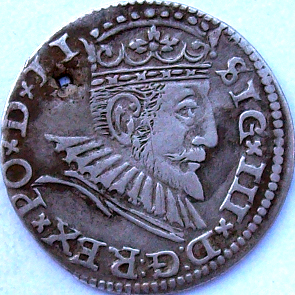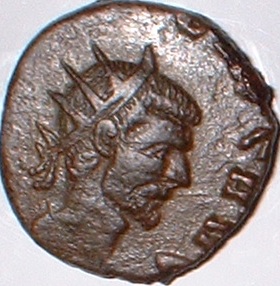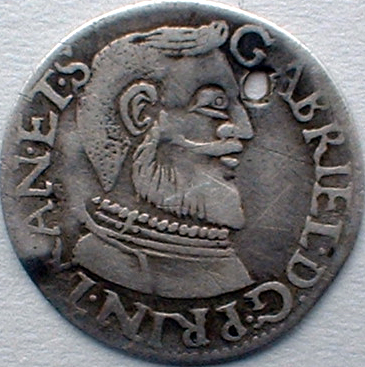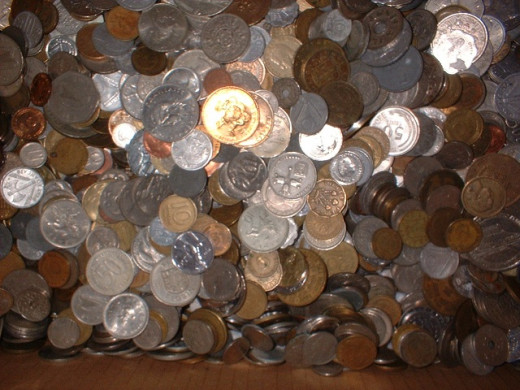Guide to Value of Rare Coins

This guide is to assist in finding out the general value of coins. It is divided in to three main sections: ancient, medieval, and modern coins. Please keep in mind that considering all coins in existence there are thousands upon thousands of different types and so there is no real way for us to cover them all in one or even several articles. But this guide will give you some strong knowledge that will allow you to begin assessing the value of the more well known types of coins from these eras.
Steps To Identify The Value Of Any Coin
- Determine what empire, country, nationality minted the coin (is it Roman, Greek, a modern country, basically where and when it is from.)
- What type of metal is the coin? Obviously coins of gold are worth more than silver, silver worth more than bronze, etc.
- Determine what ruler if ancient or alternatively how many of said coin were minted for modern. Rarity will drive the worth up.
- What grade is it? A coin that looks almost perfect will be worth more than a coin with little to no detail.
Keep in mind any of these steps can be effected by another. If you have a coin of a less valuable metal but it is from an ancient era and it is extremely rare it has potential to be worth more than even a common gold coin from another era. Also a high grade silver coin could be worth more than a low grade gold. It really depends upon each of the above steps.

Ancient Coins
Roman coins cover a period of hundreds of years from the beginning of the republic in 509 BC to the fall of the western Roman empire around 476 AD. Coins from the republic era are often more rare to find as there were many types in circulation so fewer of each type are found. During Imperial times the less circulated emperors are the coins that will bring the most money. Some emperors were in office for a very short period and had very few coins minted before they were replaced. The most common and heavily circulated coins from the Roman empire are those of the Constantinian dynasty. The majority of the 4th Century was dominated by the rule of one member or another of the family of Constantine I the great. These coins are readily found today in Europe because of the high numbers minted and as such have the least value. Below are some examples of roman imperial coins.
Greek coins are usually worth more than Roman for a few reasons. Ancient Greece was a patchwork of mixed kingdoms and so each kingdom minted their own coins. The Greeks although very influential were dominant only for about four to five hundred years. Overall they are more rare. The only factor that usually drives these types of coins down is the quality, due to their age they are often in poor condition. The most common bronzes come from either the kingdom of Macedonia or Athens.
Other ancient coins from miscellaneous kingdoms and empires are often passed over out of lack of documented history and interest. Ancient Chinese coins are usually lower priced as so many were minted they are easy to find even from two thousand or more years ago.

Medieval Coins
Primarily the coins of medieval Europe are the most sought after. You will find that many coins from medieval period Europe are worth more than those of the Roman or the Greek period even though some medieval coins can be as much as a thousand years younger. This is primarily due to the fact that medieval Europe was a vast splintered conglomeration of individual kingdoms all minting their own coins thus making most of these coins more rare to find. There were also many more silver coins minted during this period. A lot of the coins from medieval Europe are tied to rich events in known history.
Simple Coin Grading Table (for ancient and medieval)
Grade
| Details
|
|---|---|
Poor
| Lowest grade of coin, features hardly distinguishable, nearly completely rubbed off, may be completely unidentifiable.
|
Fair
| Low grade, features may be heavily rubbed down and may only be partially identifiable.
|
Good (G)
| This grade still may be heavily worn however to be Good it must be at least identifiable to type of coin and partial legend may show.
|
Very good (VG)
| May be worn, Legend should show enough to be understood, partial patina, should be identifiable to type and period.
|
Fine (F)
| Legends are seen but some detail not showing, patina may be rough slightly worn, coin should be easily identified
|
Very Fine (VF)
| Slight wear only on highest points of coin, slight shine of original surface, full patina possibly slight roughness, fully identifiable.
|
Extra Fine (EF)
| May have slight wear on highest points of coin, beautiful shine, fully smooth patina, fully identifiable
|
Modern Coins
Today with the advent of online marketplaces like Ebay many coins of the modern period that once may have been worth something have been devalued. In terms of modern coins to be worth something it must be from an important period of history (World War II Germany for example) or made from a valuable metal (silver, gold, etc.) Rarity can play an issue but usually in conjunction with one of the other two criteria.









